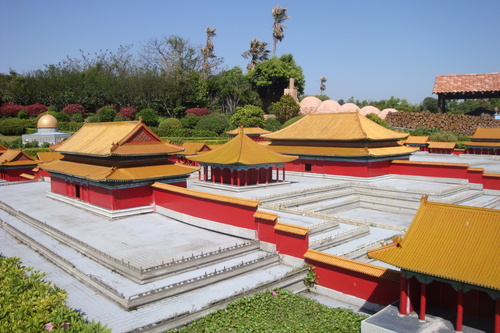After the various hikes in and around Tiger Leaping Gorge, our group stopped by Shangrila on the way to Napa Village, a small village of about 40 people in the heart of Yunnan’s mountainous region. We were invited to home stay with Tibetans, which was interesting to say the least. Tibetans are an ethnic minority so they get some benefits from the government, the most notable being their ability to have multiple children without being penalized with an extra child fine. I think the going rate for an extra child for a Han Chinese (the most common ethnicity in China, over 90% of the population) is about 30,000 dollars. Also, it seemed as though Tibet was “backwards” in a lot of ways. Their homes are made almost entirely of wood, limited electricity, no central heating/cooling unit whatsoever, reliance on farm animals, etc etc. I felt the few luxuries we did have at those home stays (such as solar powered, if unreliable hot water, were only there because of its status as a hostel, since being a hostel for allows the family a good supplementary income.
The heart of a Tibetan home is the fireplace, a large, central fireplace that’s almost always burning. It’s the sole source for much of the heat in the home and is also used to cook food and boil water. Their toilets, not to anyone’s surprise, were squatters. At this point, I abhorred squatter toilets. But sadly enough, I was used to it at that point. I’m pretty inflexible so for me to squat down and try to go number two is quite the challenge, but I’ve figured out some methods that work for me. And yes, I am proud of myself for that accomplishment.
My host family was really warm and welcoming. I had a host mom and a host dad, both of whom tried very hard to make us as comfortable as possible. They had two children, both of whom were old enough to be out in the real world and thusly not with us. One interesting thing is that our host mom could not speak a lick of Chinese. Tibet has a completely different culture and language, which is not at all similar to Chinese. When my roommates and I tried to communicate with our host mom in our developing Chinese, we quickly realized that her Mandarin was about as good as ours. It was hard, but via wild hand movements and charades, we got most of our messages across (I think?). Our host dad’s Chinese was alright, but he spent most of the day out working.
Every morning they would prepare for us eggs, apples, some fried yak cheese, and yak milk, and yak butter tea. I can’t really say I liked yak products too much. It has a different taste than cow dairy products. My theory is this, human beings weren’t meant to consume dairy products. In fact, we were only meant to consume human milk and only up to a certain age. That’s why most of the world is lactose intolerant (even though most of the western world IS lactose tolerant due to generations of biological conditioning). That being said, I’m only really used to cow milk, cow cheese, etc. But as soon as you give me different-animal milk/cheese, my taste buds reject is somewhat. It’s not bad. Just unfamiliar. The best dish and the highlight of the Napa experience was the Tibetan hotpot. In a word, it was awesome. I don’t know how to describe it. A buttload of different meats and noodles and some veggies all boiling in a stone pot in the fireplace. It was delicious. Oh, and how can I forget Tibetan barbeque. That was amazing. The fireplace was cleared of all pots and pans, and right on top of the iron shelve we placed our meats. From sweet and tangy marinated beef to chicken wings, from potatoes to tofu, even spam-like sausage meat was a joy to behold in my eyes and hold in my stomach. In Tibet, if the food is weird, it’s weird. But when its good, its fantastic.
At Napa Village we did a variety of activities. Kayaking in the lake, hiking up the mountains, typical travelling touristy stuff. But the best activity was definitely the Tibetan dance party. We all gathered in one of the home stay family and huddled around the fireplace. The Tibetans were garbed out in their best traditional dress, which was distinctly oriental, intricate, and colorful. We drank, we danced, we sang, we had a good time. The funny part is, all the Tibetans were singing their traditional folky songs of old, and we were expected to bring some songs as well. Our repertoire consisted mainly of childhood songs like “I’m a little teapot”, “Twinkle Twinkle Little Star”, songs everyone knows like our national anthem, and Backstreet Boys, as well as some TV show songs like “Arthur” and “South Park”. Hilarious, embarrassing, and a little sad, but we pulled through somehow and saved face.
Location: Dali, China







